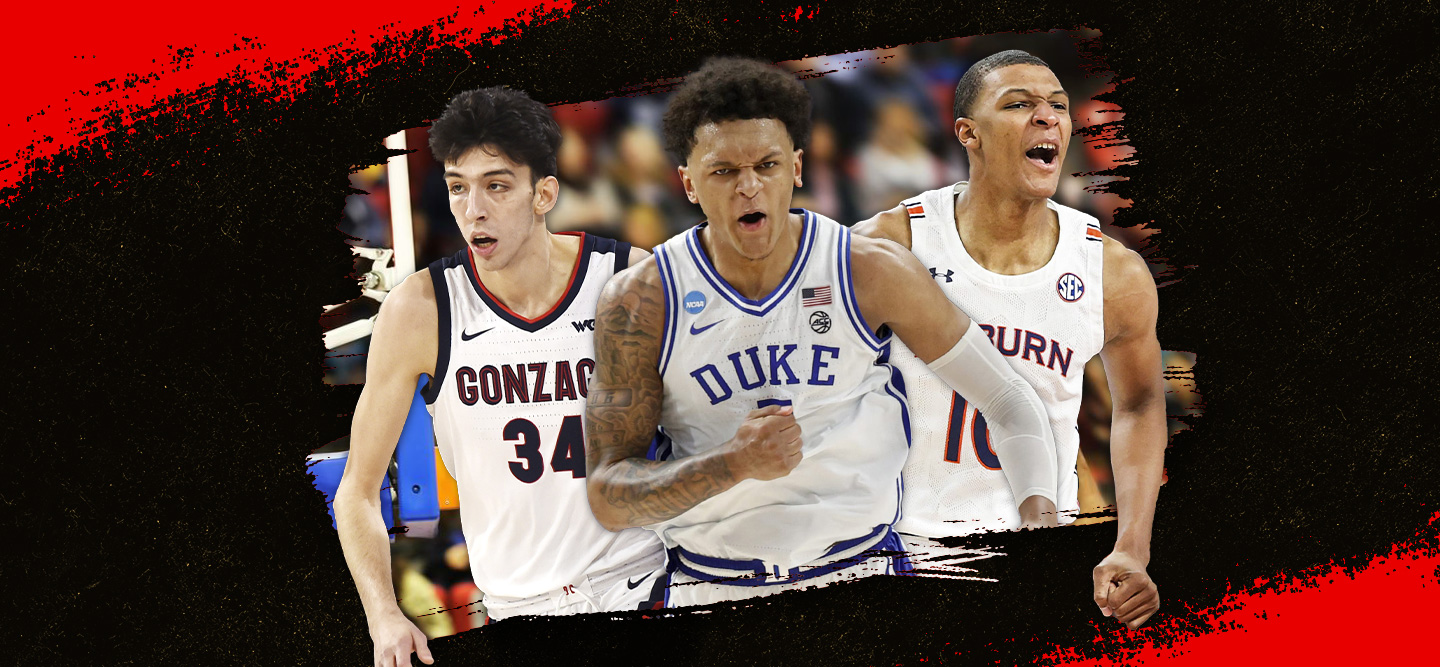NBA Legends at March Madness: How They Performed

There was a time when NCAA college basketball was the highest level of basketball in the entire world. Now it’s the NBA leading the charge, but the professional game that emerged in the 1940s is a different sport in many ways. Not everyone that succeeds in college will achieve fame in the pros; not everyone who dominated the NBA was a success at the NCAA level. So when it comes to NBA legends at March Madness, just how did they perform? Let’s find out.
When you look at the history of the NBA, there have been five generations of players, each with its own dominant player at the top; LeBron James is today’s alpha male, but he didn’t go to college, so we’re including another multi-time MVP you may be familiar with.
George Mikan
We start at the beginning with the undisputed No. 1 player from the dawn of professional basketball. Mikan was a 6-foot-10 centre from DePaul University who absolutely crushed it back in the 1940s and 50s with the Minneapolis Lakers, winning seven titles across nine seasons in the NBL, BAA and NBA. With his size and his ambidextrous hook shot, Mikan was unstoppable – the NBA even had to change its rules in response, introducing goaltending, the shot clock and a much wider key.
None of this was predestined. Mikan was a gangly collection of arms and legs when he entered DePaul in 1942, back when “big men” were thought to be too awkward to perform at a high level. But head coach Ray Meyer saw Mikan’s potential and turned him into a lethal weapon. The Blue Demons won the NIT in 1945, when it was still the top tournament in college hoops, and Mikan was named MVP after scoring 120 points in three games.
Wilt Chamberlain
As Mikan was winding down his career in the mid-50s, the next future legend was just getting warmed up. Wilt “The Stilt” Chamberlain was another game-changing big, standing 7-foot-1 and already a star athlete in high school (in both basketball and track) before entering the University of Kansas in 1955. By the time his career was over, Chamberlain was a two-time NBA champion, a four-time MVP, and oh yeah, he scored 100 points in a single game for the Philadelphia Warriors on March 2, 1962.
But how did Chamberlain do at Kansas? Amazingly well – so well that they once again had to change the rules for offensive goaltending and other important aspects of the game. In his varsity debut, the No. 2 Jayhawks were runners-up to No. 1 North Carolina at the 1957 NCAA Tournament, where Chamberlain posted 23 points and 14 rebounds during the final in a narrow 54-53 loss.
Chamberlain was nonetheless named the Most Outstanding Player at the Final Four, having put up 32-and-11 with seven blocks in Kansas’ 80-56 semifinal win over the post-Bill Russell San Francisco Dons. Those two players would eventually do battle in the NBA, after Chamberlain left Kansas for the Harlem Globetrotters following a frustrating 1958 season where they didn’t make the Tournament.
Kareem Abdul-Jabbar
At the tail end of his career, Chamberlain had another famous rivalry with the third superstar on our list. Abdul-Jabbar was born in Harlem as Lew Alcindor; he was yet another step above Mikan and Chamberlain, standing 7-foot-2 and using his own version of the hook shot – the skyhook – to great success at all levels of the sport. Abdul-Jabbar would eventually win six NBA titles and six league MVP awards while setting the all-time record for scoring that was recently broken by James.
But first, Abdul-Jabbar was busy putting together the best March Madness resume of all time. In his three varsity seasons under head coach John Wooden at UCLA (freshmen still weren’t allowed to play) from 1966-67 to 1968-69, the former Alcindor led the Bruins to the title every single year, and was named the Most Outstanding Player at the NCAA Tournament on all three occasions. When it comes to NBA legends at March Madness, Kareem simply had to be involved.
Michael Jordan
Is Jordan still the Greatest of All Time, or have we moved on to James now? That’s still up for debate, but the torch has to be handed over at some point, and as Kareem was enjoying his sunset years with the Lakers, Jordan was starting to carve out his own legacy with the Chicago Bulls. You know the rest: six rings and five MVPs, and as a 6-foot-6 shooting guard, the first non-big to dominate this sport.
But do you remember his time with the North Carolina Tar Heels? Jordan did indeed enjoy tremendous success at this level, scoring the winning basket in the 1982 title game against Patrick Ewing and Georgetown – but James Worthy was the star of that team, and the Tar Heels didn’t reach the Final Four in 1983 or 1984 despite Jordan’s heroics. Still, you could expect to see MJ feature on most of the March Madness odds at the time.
Stephen Curry
Not that you have to win the National Championship to become a March Madness icon. Stephen Curry first made his name playing for the Davidson Wildcats, then a low major program in the Southern Conference (they’re now a mid-major in the Atlantic 10). The 6-foot-3 point guard played at Davidson from 2006-07 to 2008-09 and set all sorts of scoring records. Curry even managed to get the Wildcats all the way to the Elite Eight in 2008, and was named Most Outstanding Player from the Midwest Region despite not reaching the Final Four.